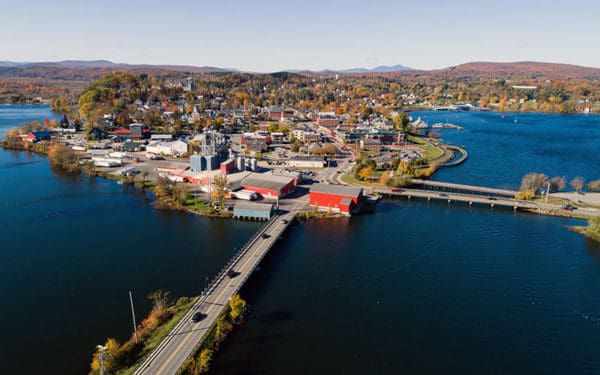“Our Scrumptious Lake Phytotastic” is a Graphic Novel Focusing on Lake Champlain’s Blue-Green Algae Woes
A new graphic novel for kids explores how and why blue green algae break out on Vermont’s Lake Champlain.

A new graphic novel for kids explores how and why blue green algae break out on Vermont’s Lake Champlain.

CLF’s forceful advocacy paid off in this year’s Rhode Island legislative session with laws passed to help our climate, stop plastic pollution, and safeguard our drinking water from toxic chemicals.

“PFAS chemicals are a toxic scourge on our environment and our health,” said CLF attorney James Crowley. “These forever chemicals have no place in our water, and this bill will help ensure that Rhode Islanders can feel confident that our drinking water is safe. We look forward to Governor McKee signing this bill into law, and we urge the Department of Health to work quickly to adopt a permanent drinking water standard.”

CLF pushes for more robust standards for clean water regionwide.

We are helping to make our built environment healthier for all.

New federal and state laws and policies require government agencies to invest in environmental justice populations. The details behind these requirements must recognize the primary predictor to experience environmental burdens: race. CLF is working to ensure that government investments reach the populations who have endured the brunt of pollution and other consequences of climate change.

“The EPA’s new plan is a key, first step in the battle to protect communities from these dangerous chemicals,” said CLF President Bradley Campbell. “But PFAS-type compounds of varying names are still being created, used, and released into the environment. The government must go further to stop this assembly line of ‘forever chemicals’ and hold the manufacturers accountable for the widespread contamination of the nation’s air, land, and water.”

“Pesticides are already poisonous by design, and we now know the risks to human health are even greater than previously thought,” said Maggie Super Church, Vice President of Healthy and Resilient Communities at CLF. “PFAS pose a grave danger to human health, and they have no place being sprayed on lands where they can seep into groundwater. It’s time for state leaders across New England to step up and get serious about reducing exposure to these toxic chemicals.”

“Toxic garbage water has no place in Lake Memphremagog or any of Vermont’s waters,” said CLF attorney Peter Blair. “Landfill leachate contains a toxic soup of chemicals, including PFAS, which cause serious health issues in humans and animals. Waste companies need to take responsibility for the damage they’re causing to our waters, and this new permit is a huge step towards making that happen in Vermont.”

PFAS – or forever chemicals – are being detected in drinking water sources throughout New England. We need to find ways to better regulate these toxic chemicals.
